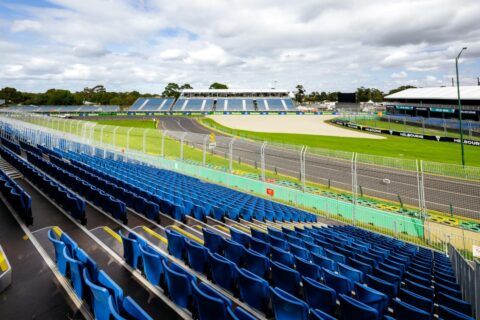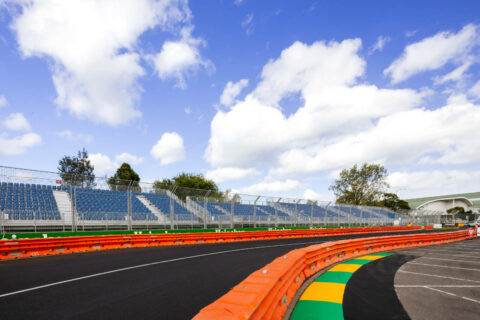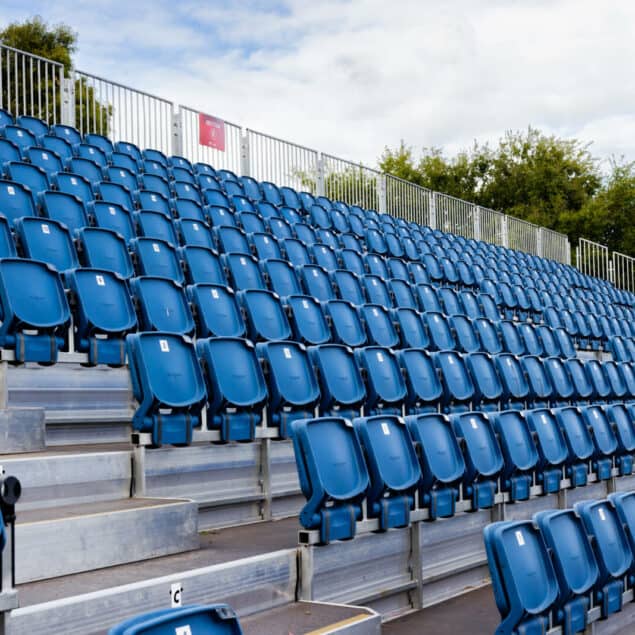Anyone who has watched Drive to Survive on Netflix has some idea of the mega-force behind Formula 1 (F1) in global motor sport, and that series just focuses on the teams and drivers. Behind the scenes, a massive workforce and an extraordinary amount of organisation supports million-dollar cars to vie for a place on the podium and for the travelling circus to deliver a spectacle to adoring fans.
F1 has the most comprehensive logistics and execution than any other sport, and when the host site swarms with enthusiasts, few give much thought to the infrastructural glue that holds it together.
The McMahon Services Events team has been working closely with the Australian Grand Prix Corporation since 2016, contracted to install seating for this high-octane Albert Park event. It’s been an exacting project and the requirements have changed over the years, initially to provide 12,000 seats which increased to 17,000 before COVID-19 swung its axe on the first race of the 2020 season. Of course, the infrastructure was already built.
When F1 returned to our shores, fans turned up in droves to satiate a two year yearning for the highest class of international racing. This called for a further increase in capacity to 28,000 seats, with the same delivery time, elevating it to become an even more challenging project for our team.
“It was rather daunting at first,” Jon Berry, Manager – Events said, “because seeing it on paper is one thing, but executing it to a deadline is quite another.”
“We had a reduced workforce like so many others, and pandemic requirements would add further pressure,” Jon said.
McMahon Services settled into comprehensive strategic planning, breaking each stand into manageable segments, and designing a way that the current workforce could be effective and supportive to the large numbers of inexperienced staff that would be required.
“We only had 40% of our experience on our existing team, which meant 60% of the workers would need to be upskilled quickly and efficiently,” he said.
The client required 12 grandstands, seven of them new, some of which were to be erected in a location never used before. This meant redesigning traditional models and being flexible on site when other infrastructure would inhibit line of sight. Ultimately, 180 semi-trailers of seating and steel would be used.
It was evident that adaptability was required and in one instance, a stand needed to be dismantled, redesigned, and rebuilt to incorporate new sponsorship signs in a space with a smaller footprint. This required achieving the desired result within the normal design protocols and client approvals in a three-day timeframe.
With most of the team being new, it was paramount that a clear direction and cohesiveness would be needed because there was no room for a change to the deadline.
“It’s non-negotiable for when the race starts,” said Jon, “so there is zero room for error or inefficiency.
” With the existing team heavily relied upon for their experience and skills, knowledge was transferred to a new team in an incredibly short timeframe. The experienced team was committed to work on each stand before moving to the next, teaching and upskilling the new workforce as they went.
“It took 22,000-man hours to complete this assignment, which took us nine weeks to build and six weeks to dismantle. It makes us very proud. Interaction and respect within the team was paramount and we came together to deliver the biggest seating contract in the country,” said Jon.
As Daniel Ricciardo famously said, “Sometimes you’ve just got to lick the stamp and send it.” That’s how our team tackles anything that’s asked of them, they just get on with the job.




